Milky Way Timelapse Taken This Morning (06/03/2016) On Osea Island. Taken Between 4:50 Am And 6:10 Am,
Milky Way timelapse taken this morning (06/03/2016) on Osea island. Taken between 4:50 am and 6:10 am, panning is achieved by using my SkyTracker in horizontal mode. 6D Samyang 24mm @f2.8 ISO4000 25 sec exposures.. Please watch in HD!!
More Posts from Alitheastronomer and Others


astronomy is the one class i don’t mind studying for
It's amazing how these galaxies, that are so unfathomably huge to us, are actually really fragile and delicate in the scheme of things
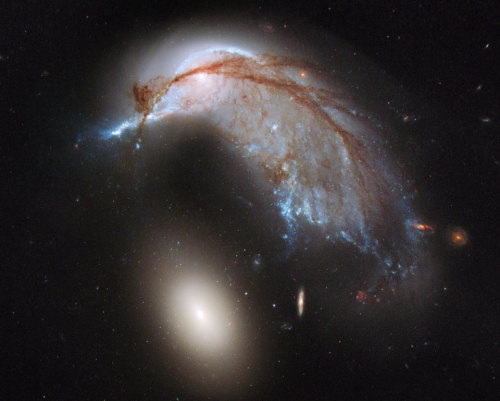
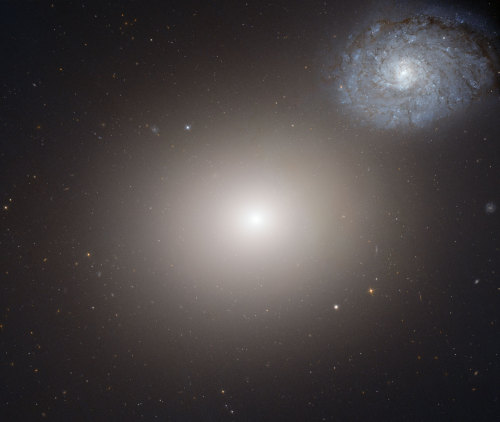
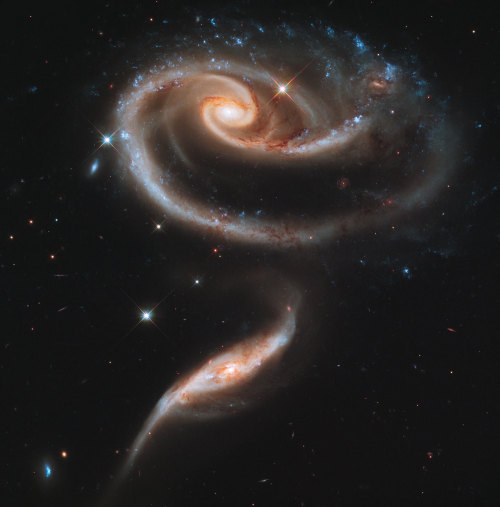
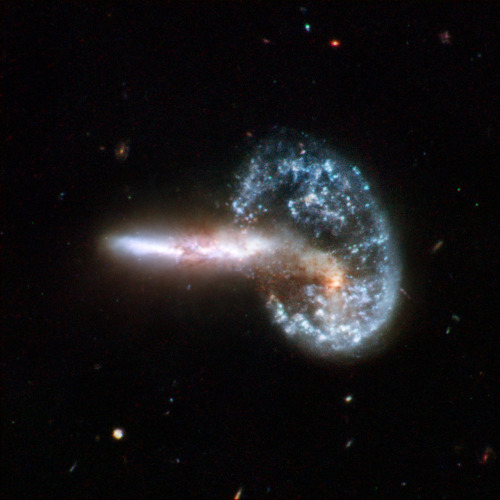

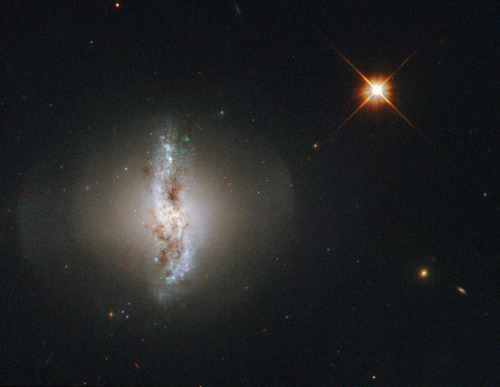
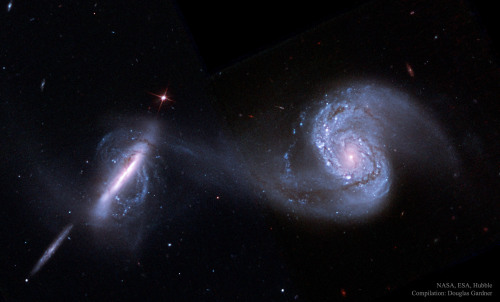



Top 10 Bizarre Galaxy Pairs From Hubble
“The Arp catalog illustrates galaxies in many different stages of a collision:
* prior to their first close pass, * in the collision process, * subsequent to an interaction but before merging, * and in the final merger stages.
Unlike ellipticals, spirals are easily disturbed, often becoming destroyed entirely by such an interaction.”
When you take a glimpse into the deep Universe, beyond the gas, dust, stars and planets of our own galaxy, you enter the realm of the galaxies. In general, they come in two types: the spirals, with neat, orderly arms, and the ellipticals, with a symmetric, bulging shape. But for everything that exists in the Universe a particular way in general, there are exceptions. In the 1960s, astronomer Halton Arp became fascinated with these exceptions, creating a catalog of 338 examples: the Atlas of Peculiar Galaxies. We now know that most of these are galaxy pairs or triplets in the process of major mergers, displaying features such as tidal disruption, stellar bridges, starbursts and occasionally a rare, ring shape.
More cool space words:
Apastron: the point where two binary stars are farthest apart.
Azimuth: distance of an object in angular.
Bolide: an especially bright meteor, especially one that explodes in the atmosphere (also called fireballs!).
Catena: a chain or series of craters.
Ejecta: material that is strewn about a crater by an impact, usually a meteorite or other similar object.
Ephemeris: a table that lists the positions of the sun, moon, and planets by date.
Heliosphere: the magnetic bubble of space that contains our solar system, solar wind, and the entire solar magnetic field. It is so large it goes beyond pluto's orbit.
Meridian: an imaginary circle that goes through the north and south poles, and the zenith and nadir of a location.
Nadir: the point in the sky directly underneath you.
Nova: when a dying star suddenly flares in brightness. The star becomes thousands of times its original luminosity.
Prominence: an explosion on the surface of the Sun.
Singularity: the impossibly small space in the center of a black hole where density and gravity are infinite, and space-time curves infinitely.
Spicules: a jet of gas ejected from the sun's atmosphere that resembles grass.
Supernova: one of the most powerful forces in the universe. When a star uses up all of its fuel it ends its life in a spectacular and devastating explosion.
Terminator: line on a planetary body that separates the light side from the dark side.
Umbra: the darkest part of a shadow.
Zenith: the point in the sky directly overhead.
Zodiac: an imaginary belt across the sky that the sun, moon, and planets are always in. The zodiac is made up of 12 constellations.
pretty space words
aphelion - the point in the orbit of a planet, asteroid, or comet at which it is farthest from the Sun. astral - relating to or resembling the stars. caldera - a large volcanic crater, especially one formed by a major eruption leading to the collapse of the mouth of the volcano. celestial - positioned in or relating to the sky, or outer space as observed in astronomy. constellation - a group of stars forming a recognizable pattern. cosmos - the universe seen as a well-ordered whole. equinox - the time or date at which the sun crosses the celestial equator, when day and night are of equal length. faculae - bright patches that are visible on the Sun’s surface. lunation - the interval of a complete lunar cycle, between one new Moon and the next. interstellar - occurring or situated between stars. nebula - a cloud of gas and dust in outer space, visible in the night sky either as an indistinct bright patch or as a dark silhouette against other luminous matter. perihelion - the point in the orbit of a planet, asteroid, or comet at which it is closest to the Sun. synodic - relating to or involving the conjunction of stars, planets, or other celestial objects.

The star cluster Westerlund 2
js
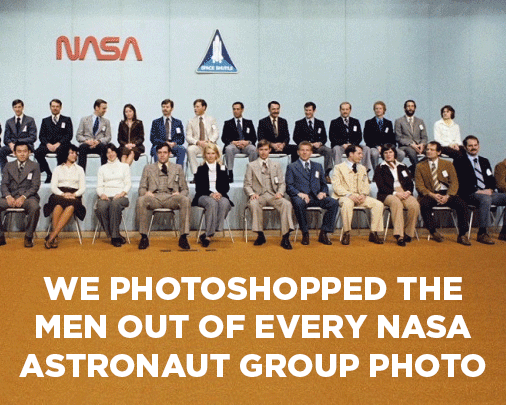
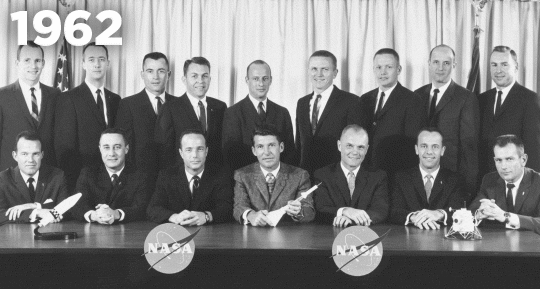
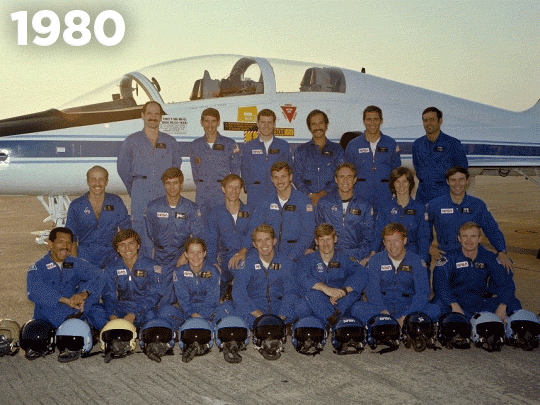
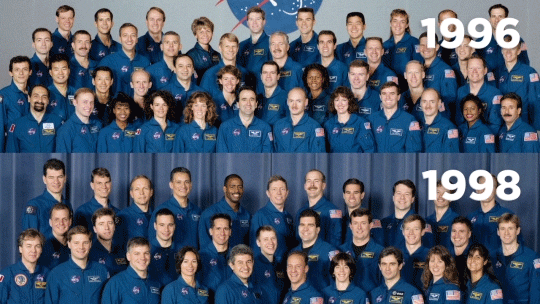
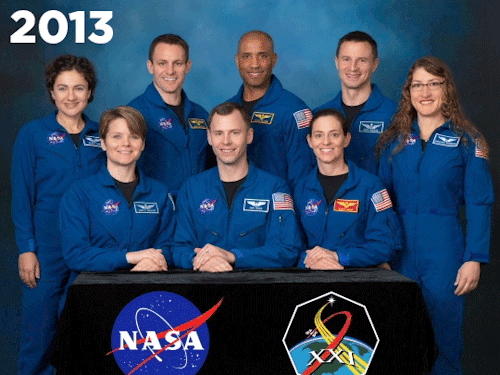
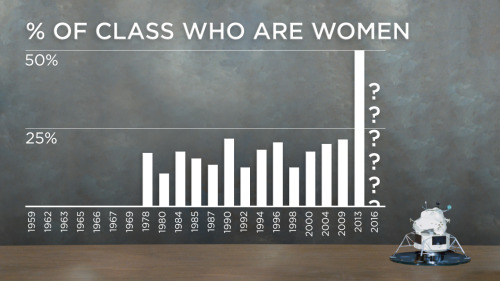
Check out our new video to see every NASA astronaut class. Some patterns emerge.

The Space Shuttle Columbia
Pause today to remember the Crew of STS-107, who all died on this day 13 years ago, February 1, 2003, when the Space Shuttle Columbia became unstable and disintegrated on re-entry over Texas. The Crew:
The Flight Commander was Rick D. Husband, a U.S. Air Force colonel and mechanical engineer, who piloted a previous shuttle during the first docking with the International Space Station on STS-96.
The Pilot was William C. McCool, a 1983 graduate of the United States Naval Academy in Annapolis, Maryland and U.S. Navy commander.
The Payload Commander was Michael P. Anderson, a U.S. Air Force lieutenant colonel. He was also a physicist and mission specialist who was in charge of the science mission.
The Payload Specialist Ilan Ramon was a colonel in the Israeli Air Force and the first Israeli astronaut.
The Mission Specialist was Kalpana Chawla, an Indian-born aerospace engineer who was on her second space mission. She was the first Indian woman in space.
The Mission Specialist was David M. Brown, a U.S. Navy captain trained as an aviator and flight surgeon.
The Mission Specialist was Laurel Blair Salton Clark, a U.S. Navy captain and flight surgeon. Clark worked on biological experiments.
The Space Shuttle Columbia was named after the poetic designation for the United States of America. This poetic name (based on Christopher Columbus, thought then as the sole discoverer of America) was meant to be both inclusive and a little bit nostalgic, in the sense that America could be embodied in a name. Clearly these seven astronauts and mission specialists embodied the best spirit of America, the inclusion of an Indian and Israeli the strongest symbol yet of what America can accomplish when unified to a common purpose. Special thought to William McCool, graduate of the USNA-I pass almost daily the ‘McCool Marker’, a memorial on the grounds of the USNA golf course to celebrate his achievements both as a Naval Aviator but also his accomplishments as a Midshipman, where he served as Captian of the Cross Country team his senior year. The marker is placed on the cross country course 16 minutes from the finish line of his fastest run on the Navy course.

the most optimistic letter that any human has ever written

Hubble Sees a Galactic Sunflower : The arrangement of the spiral arms in the galaxy Messier 63, seen here in an image from the NASA/ESA Hubble Space Telescope, recall the pattern at the center of a sunflower.
js
Just the facts!


New Horizons image of Jupiter and Io
-
 yumispacesposts liked this · 1 year ago
yumispacesposts liked this · 1 year ago -
 smol-title reblogged this · 5 years ago
smol-title reblogged this · 5 years ago -
 thatwaywardwolf reblogged this · 6 years ago
thatwaywardwolf reblogged this · 6 years ago -
 valenthine liked this · 6 years ago
valenthine liked this · 6 years ago -
 5piritualgangster liked this · 6 years ago
5piritualgangster liked this · 6 years ago -
 ram-dragon-tm liked this · 6 years ago
ram-dragon-tm liked this · 6 years ago -
 willh431 liked this · 6 years ago
willh431 liked this · 6 years ago -
 i-s-d-m-8 liked this · 6 years ago
i-s-d-m-8 liked this · 6 years ago -
 kittykat5742 reblogged this · 6 years ago
kittykat5742 reblogged this · 6 years ago -
 swaggin--dragon reblogged this · 6 years ago
swaggin--dragon reblogged this · 6 years ago -
 swaggin--dragon liked this · 6 years ago
swaggin--dragon liked this · 6 years ago -
 wallymcflubberfins liked this · 6 years ago
wallymcflubberfins liked this · 6 years ago -
 jester-toon-rabbit liked this · 6 years ago
jester-toon-rabbit liked this · 6 years ago -
 abodeglued liked this · 6 years ago
abodeglued liked this · 6 years ago -
 thesleepdemon reblogged this · 6 years ago
thesleepdemon reblogged this · 6 years ago -
 sterlingsilverroses reblogged this · 6 years ago
sterlingsilverroses reblogged this · 6 years ago -
 sterlingsilverroses liked this · 6 years ago
sterlingsilverroses liked this · 6 years ago -
 youlookverywowtonight liked this · 6 years ago
youlookverywowtonight liked this · 6 years ago -
 sirchubbybunny liked this · 6 years ago
sirchubbybunny liked this · 6 years ago -
 marckdiaz09 liked this · 6 years ago
marckdiaz09 liked this · 6 years ago -
 rootbeersurge69 reblogged this · 6 years ago
rootbeersurge69 reblogged this · 6 years ago -
 runningweightlesssun-blog liked this · 6 years ago
runningweightlesssun-blog liked this · 6 years ago -
 kaizer619 liked this · 6 years ago
kaizer619 liked this · 6 years ago -
 phanuel25-blog liked this · 6 years ago
phanuel25-blog liked this · 6 years ago -
 chattywayne liked this · 6 years ago
chattywayne liked this · 6 years ago -
 fabfix reblogged this · 6 years ago
fabfix reblogged this · 6 years ago -
 fabfix liked this · 6 years ago
fabfix liked this · 6 years ago -
 d-strktat-ntshit liked this · 6 years ago
d-strktat-ntshit liked this · 6 years ago -
 onepiece4all0 liked this · 6 years ago
onepiece4all0 liked this · 6 years ago -
 dazzer86 liked this · 6 years ago
dazzer86 liked this · 6 years ago -
 stratabilly liked this · 7 years ago
stratabilly liked this · 7 years ago -
 poeticksoul liked this · 7 years ago
poeticksoul liked this · 7 years ago -
 charliesfeels liked this · 7 years ago
charliesfeels liked this · 7 years ago